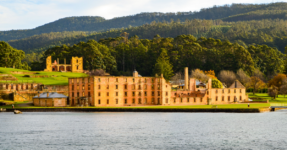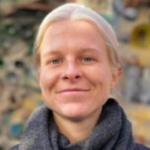Horrific Australian Crimes: Massacres, Serial Killings and Persistent Child Sexual Assault

Australia is no stranger to unimaginable crimes, despite our relatively small population.
Indeed, our lucky country has been the scene of some of the world’s most horrific criminal offences – crimes that have attracted worldwide attention and, for those who have perpetrated them, cemented their legacies in the annals of criminal history.
And at the expense of adding to that notoriety, and recognising the life-long impact of the victims of their loved-ones, here are some of the most horrific crimes committed on our shores.
Katherine Mary Knight
Katherine Mary Knight is the first woman in Australia’s history ever to be sentenced to life imprisonment without the possibility of parole for the murder of her partner in February 2000.
Katherine was raised by Ken Knight and Barbara Roughan, with her mother starting an adulterous relationship with Ken that led to irrefutable trauma for everyone involved.
Barbara’s story is a tragic one that describes how a long life of abuse led to irreparable psychological damage to a woman who truly had no chance of a normal existence.
Ken would routinely sexual assault Barbara, make her partake in sexual acts that she did not consent to, and assault her, along with several other family members. Therefore, Katherine had a chaotic and violent upbringing in her abusive childhood, no doubt leading to her inappropriate relationships with older men, spurring her towards the violence and vitriol that she felt towards men as she aged.
When Katherine was older, she had relationships with David Saunders, John Chillingworth, and — most notably — a volatile relationship with John Price, a father of three children from another relationship, who started having an affair with Knight in 1987.
After 13 years of a tumultuous partnership, Katherine eventually ‘snapped’ and killed Price in a violent display in February 2000.
Katherine stabbed Price with a butcher’s knife while he was asleep, later chasing him throughout the house to prevent him from escaping.
As he tried to flee through the home, he eventually succumbed to his fatal injury and bled out before he was able to reach the front door.
And it wasn’t just one stab wound — coroner reports show that Katherine stabbed Price over 37 times.
But the worst wasn’t over — the most horrific act of this crime was what occurred post-mortem. Katherine skinned Price’s body, hung the meat from a meat hook, and decapitated the body. She then cooked part of the meat, attempting to serve the human remains for dinner to Price’s children.
Due to the graphic nature of how Katherine disposed of the body, and the premeditation to attempt to serve human meat to children for her pleasure, Justice Peter McClellan of the NSW Court of Criminal Appeal stated this crime was ‘almost beyond contemplation in a civilised society.’
Port Arthur Massacre
The Port Arthur Massacre was an earth-shattering mass shooting that occurred in Port Arthur, Tasmania, in 1996. This tourist town was rocked by the deadliest massacre in modern Australian history, leading to an important — and too-late – change in Australia’s laws on gun ownership and usage.
The perpetrator was Martin Bryant, a 25-year-old who suffered from depression after his father committed suicide in 1993. His depression led to binge drinking, suicidal ideation, and the planning of the massacre.
During his early life, he was described as an ‘annoying’ child with abnormal behaviour that would sometimes result in violence, bullying, and a distant affect from other children. As he grew into an adolescent, he was diagnosed as borderline mentally disabled, with the possibility of having conduct disorder, attention deficit hyperactivity, and asperger’s syndrome.
The incident which sparked Bryant to carry out the Port Arthur massacre is not quite understood. it could be either due to Bryant’s desire to remain infamous, fascination with suicide, or violent tendencies.
The murders involved 35 deaths between 28 April and 29 April 1996, with Bryant killing innocent civilians at the Port Arthur Historic site, most notably at the busy Broad Arrow Cafe, gift shop, car park, toll booth, service station, and Seascape roadway.
After the final attacks on the Seascape roadway, Bryant removed the person he abducted from the boot of his car, set his car on fire, and engaged in an 18-hour standoff with local police.
After his capture the following morning, the Government noted that gun laws must be immediately changed throughout the country.
The Prime Minister of Australia formulated the National Firearms Agreement, restricted the ownership of self-loading rifles, and initiated a government ‘buy-back’ scheme.
Peter Dupas
Peter Dupas is an Australian serial killer who is currently serving three life imprisonment sentences without parole for his span of murders between 1997 and 1999.
In his early life, he was part of a ‘normal’ family, but his routine upbringing didn’t result in assimilation into regular society. The warning signs for Dupas’ later escalation were clear in his early life, as he had a long criminal history involving sexual offences, violent attacks, breaking and entering, and false imprisonment charges.
As early as in the 1970s, Dupas was charged with multiple sexual offences for breaking into victims’ houses, threatening women, attacking women, and assault with intent to rape. based on his escalation of crimes between the 70s and 80s, the killings are not that far-fetched.
Dupas began his murderous streak in 1997 with the killing of Margaret Maher, a 40-year-old living in Broadmeadows, immediately followed the next month with the murder of Mersina Halvagis, a 25-year-old woman from Melbourne. Just one month later, Kathleen Downes, a 95-year-old at the Brunswick Lodge nursing home, was murdered in December of 1997.
During a potential ‘cooling-off’ period in 1998, Dupas was not charged with any murders during this time.
However, at the beginning of 1999, the body of Nicole Patterson, a 28-year-old counsellor, was discovered, leading to his subsequent arrest on 22 April 1999.
Two aspects of this case make Dupas one of the most horrific Australian killers of all time. Firstly, three murdered women are suspected further victims of Dupas: Helen McMahon, Renita Brunton, and Kathleen Downes. One of the victims, Brunton, was stabbed 106 times.
Secondly, Dupas was known for his mutilation of the victims’ post-mortem. He resorted to high levels of violence when it came to the killings, paired with the removal of the breasts of his female victims after the murders.
Derek Ernest Percy
Derek Ernest Percy was an Australian serial killer and notorious child killer who was responsible for the disappearance of multiple children during the 1960s.
Percy is one of the most horrific killers due to his focus on crime against children, also paired with the suspicion that he could be responsible for other high-profile cases, such as the Wanda Beach murders and Beaumont disappearances.
Percy was born in September 1948 in Strathfield. At a young age, he attracted the attention of local police in New South Wales.
When he was just 16 years old, he started having thoughts about sexual fantasies, documenting his violent ideations, and stealing women’s clothing items from nearby stores.
His first arrest came on 27 July 1969, as he abducted 12-year-old Yvonne Tuohy on Westernport Bay and held her at knife-point. He failed to abduct her friend, Shane Spiller, and he was able to run to the local police to get help.
The police tracked down Percy and later found Tuohy’s body in a paddock at Deavon Meadows, just 8 kilometres from the abduction site.
Due to his bizarre sexual fantasies, violent fetishes, cannibalistic ideation, and graphic nature of the abduction and crime, police also hypothesised that Percy could be a suspect, and the murderer, in the following cases:
- Wanda Beach — The Wanda Beach murders are one of the most prolific unsolved cases in the country’s history, featuring two 15-year-old female victims who were brutally murdered on 11 January 1965. It is New South Wales’ oldest unsolved homicide case and one of the most infamous cases of the 1960s.
Witnesses saw a man who resembled Percy talking to two girls at Wanda Beach, near his friend’s grandparents’ house in Ryde.
- Beaumont Disappearances —The disappearance of the Beaumont children involved three young children who went missing from Glenelg Beach in Adelaide on 26 January 1966, leading to the notion that parents should have stricter rules when it came to letting their children be left alone in public settings.
Percy admitted to being nearby at Glenelg Beach on the day of the disappearances.
- Allen Redston —Allen Redston was a 6-year-old who was found murdered in Curtin on 28 September 1966, with his hands and feet bound and his body wrapped in a green carpet.
Percy admitted to being in Canberra at the time of the killing, paired with an identikit that highly resembled him as a suspect.
- Linda Stilwell — Linda Stilwell was a child who disappeared while playing at the foreshore in St Kilda in 1968, with witnesses stating they had seen a man loitering in the vicinity before she vanished.
Percy was officially ruled to have been the abductor and murderer of Stillwell one year post-mortem, as he was on leave at the time in the St. Kilda area.
Most Horrific?
These are some of Australia’s most horrific crimes — but, unfortunately, they just scratch the surface when it comes to the web of violent criminal acts that have occurred on our shores.
Many infamous serial killers and child sex offenders have achieved their wishes by achieving fame and cementing their legacies, by their horrific conduct.
Due to the unimaginable nature of the crimes, the long-lasting legacy and the life-long effects on the loved ones of the victims, choosing the most horrific crime in Australia is a futile and perhaps irresponsible task.






